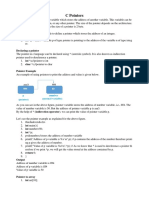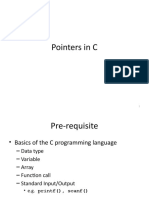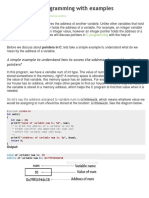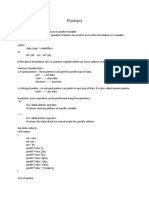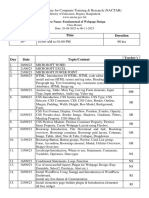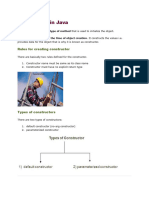0% found this document useful (0 votes)
24 views12 pagesC Pointers
The document provides an overview of pointers in C programming, explaining their definition, declaration, and usage, including dynamic memory allocation and function pointers. It includes examples demonstrating pointer arithmetic, swapping values using pointers, and memory management functions like malloc, calloc, free, and realloc. Additionally, it highlights the advantages of using pointers for code efficiency and accessing memory locations.
Uploaded by
Amit MahajanCopyright
© © All Rights Reserved
We take content rights seriously. If you suspect this is your content, claim it here.
Available Formats
Download as PDF, TXT or read online on Scribd
0% found this document useful (0 votes)
24 views12 pagesC Pointers
The document provides an overview of pointers in C programming, explaining their definition, declaration, and usage, including dynamic memory allocation and function pointers. It includes examples demonstrating pointer arithmetic, swapping values using pointers, and memory management functions like malloc, calloc, free, and realloc. Additionally, it highlights the advantages of using pointers for code efficiency and accessing memory locations.
Uploaded by
Amit MahajanCopyright
© © All Rights Reserved
We take content rights seriously. If you suspect this is your content, claim it here.
Available Formats
Download as PDF, TXT or read online on Scribd
/ 12













